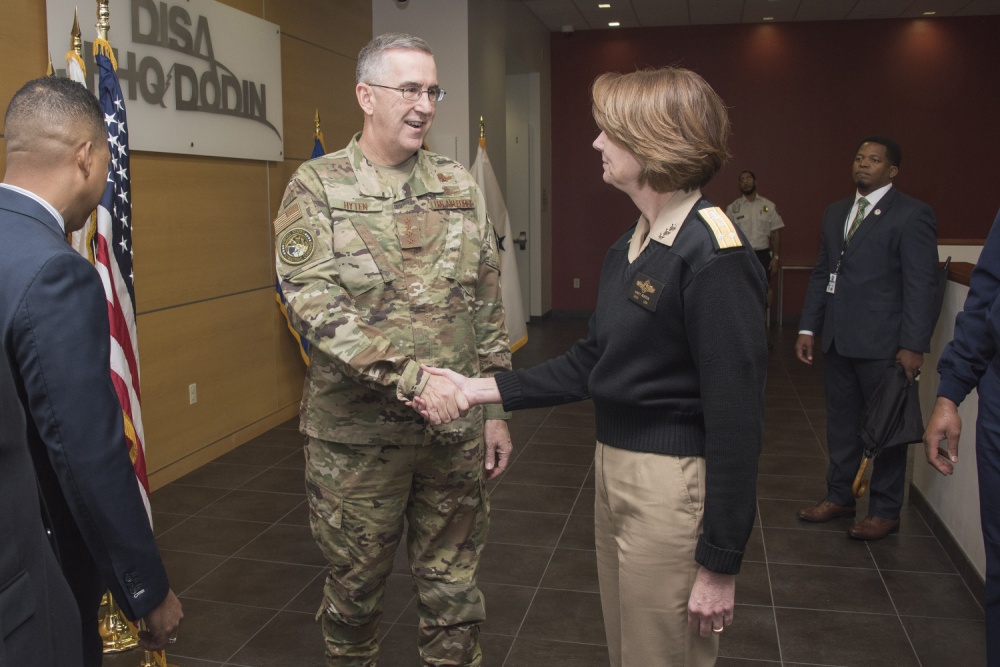
Gen. John Hyten, commander of U.S. Strategic Command, visited Vice Adm. Nancy Norton, director of the Defense Information Systems Agency and of Joint Forces Headquarters – DoD Information Networks at Fort George G. Meade, Maryland, Nov. 26, 2018, before speaking with the men and women of the Joint System Engineering and Integration Office. DISA photo by Michael Romeo.
US Strategic Command will evaluate proposals for designing a new nuclear command, control, and communications enterprise that were submitted last week, then use those ideas to form the foundation for future system requirements.
Faced with cyber threats and emerging technologies like artificial intelligence and quantum computing, STRATCOM chief Gen. John Hyten now believes the military needs to build an NC3 system that offers a “nearly infinite” number of pathways for NC3 information to travel uninterrupted.
“Over the last six months I’ve dug into [NC3] very deeply, much deeper than I would ever expect a combatant commander to have to do,” Hyten said Tuesday at a Senate Armed Services Committee hearing. “I felt the need to go out and look at how we’re doing today, and I understand that pretty well. But then I have to define now how we’re going to do it in the future, in this very challenging cyber threat environment that we’re walking into.”
Hyten is now the highest ranking official overseeing NC3 as the military overhauls that enterprise, after former Defense Secretary Jim Mattis named him the point person for NC3 operations, requirements, and systems integration last year. He’s dug into the subject by individually asking defense contractors, national laboratories, university-affiliated researchers, and federally funded research-and-development centers for their ideas.
“I found when I brought everybody together in the room, the answer ended up looking like it used to,” Hyten said. “When I kept everybody [separate], everybody had very, very innovative answers. So now we’re going to have to figure out how to capture this innovation and move forward effectively.”
Once STRATCOM settles on which technologies best suit future needs, it will be the services’ job to develop and buy them. The Air Force currently owns the majority of NC3 assets that connect decision-makers to the bomber fleet, intercontinental ballistic missiles, and command centers.
Air Force Magazine also reported earlier this month a new NC3 center will open in April to help STRATCOM oversee and plan for an updated network of satellites, aircraft, and software.
